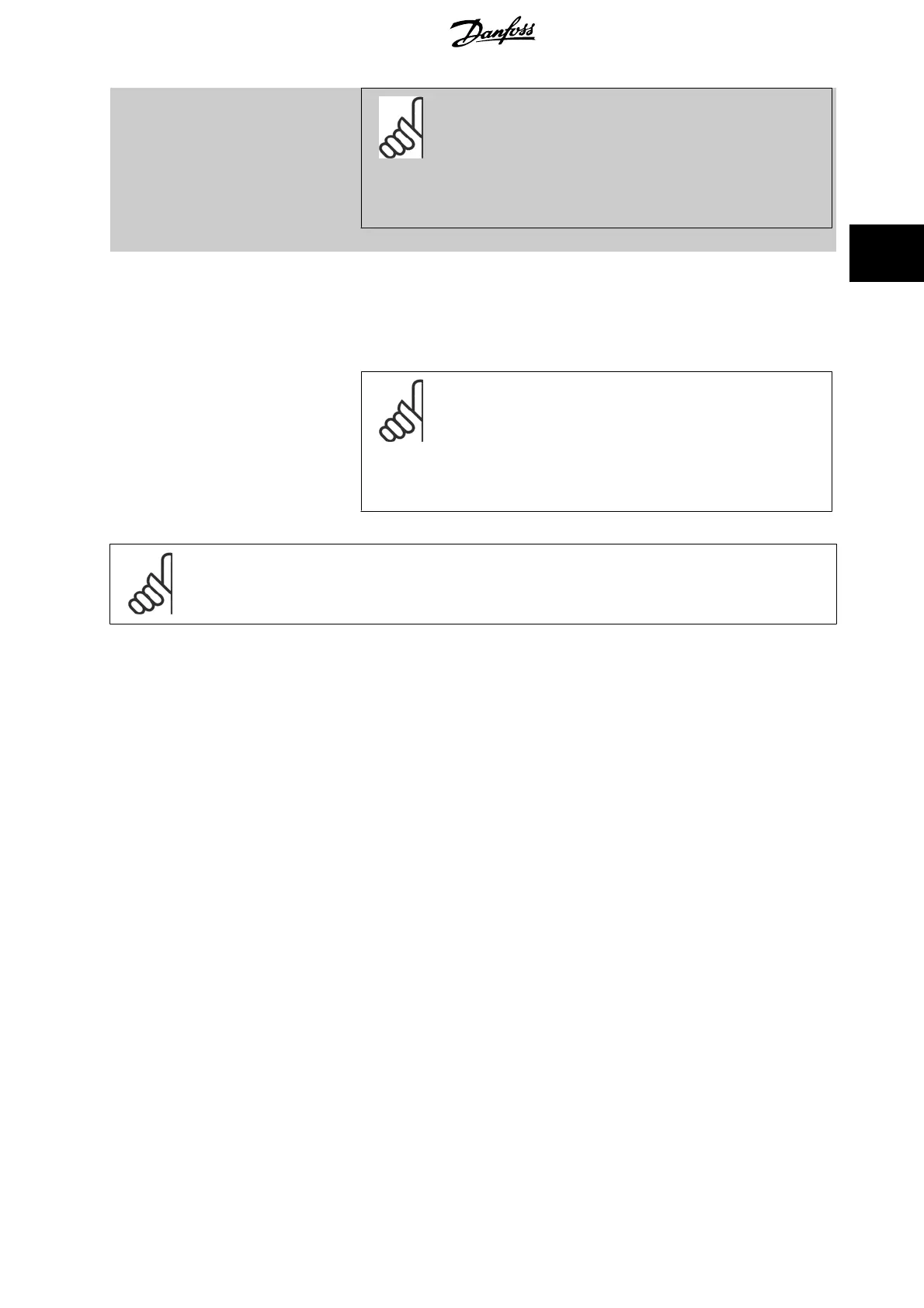NB!
If only two feedback signals are used, the feedback that is not to be used must
be set to
No Function
in par. 20-00
Feedback 1 Source
, par. 20-03
Feedback 2
Source
or par. 20-06
Feedback 3 Source
. Note that each setpoint reference will
be the sum of its respective parameter value (par. 20-21
Setpoint 1
,
par. 20-22
Setpoint 2
and par. 20-23
Setpoint 3
) and any other references that
are enabled (see par. group 3-1*).
[6] Multi Setpoint Max
Multi-setpoint maximum
[6] sets up the PID Controller to calculate the difference between Feedback
1 and Setpoint 1, Feedback 2 and Setpoint 2, and Feedback 3 and Setpoint 3. It will use the feed-
back/setpoint pair in which the feedback is farthest above its corresponding setpoint reference. If
all feedback signals are below their corresponding setpoints, the PID Controller will use the feed-
back/setpoint pair in which the difference between the feedback and the setpoint reference is the
least.
NB!
If only two feedback signals are used, the feedback that is not to be used must
be set to
No Function
in par. 20-00
Feedback 1 Source
, par. 20-03
Feedback 2
Source
or par. 20-06
Feedback 3 Source
. Note that each setpoint reference will
be the sum of its respective parameter value (par. 20-21
Setpoint 1
,
par. 20-22
Setpoint 2
and par. 20-23
Setpoint 3
) and any other references that
are enabled (see par. group 3-1*).
NB!
Any unused feedback must be set to “No function” in its Feedback Source parameter: Par. 20-00
Feedback 1 Source
,
par. 20-03
Feedback 2 Source
or par. 20-06
Feedback 3 Source
.
The feedback resulting from the function selected in par. 20-20
Feedback Function
will be used by the PID Controller to control the output frequency of
the frequency converter. This feedback can also be shown on the frequency converter’s display, be used to control a frequency converter's analog output,
and be transmitted over various serial communication protocols.
The frequency converter can be configured to handle multi zone applications. Two different multi zone applications are supported:
• Multi zone, single setpoint
• Multi zone, multi setpoint
The difference between the two is illustrated by the following examples:
Example 1 – Multi zone, single setpoint
In an office building, a VAV (variable air volume) VLT HVAC Drive system must ensure a minimum pressure at selected VAV boxes. Due to the varying
pressure losses in each duct, the pressure at each VAV box cannot be assumed to be the same. The minimum pressure required is the same for all VAV
boxes. This control method can be set up by setting par. 20-20
Feedback Function
to option [3], Minimum, and entering the desired pressure in
par. 20-21
Setpoint 1
. The PID Controller will increase the speed of the fan if any one feedback is below the setpoint and decrease the speed of the fan
if all feedbacks are above the setpoint.
VLT
®
HVAC Drive Programming Guide 3 Parameter Description
MG.11.C9.02 - VLT
®
is a registered Danfoss trademark
181
3

